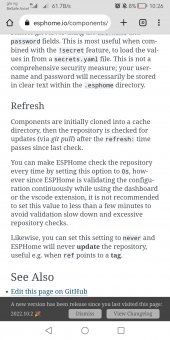uksa007
Solar Enthusiast
- Joined
- May 26, 2022
- Messages
- 239
I think float is not needed for lifepo4 battery.
Yes I think so too, but I wonder why most of the commercial chargers still have it enabled, like victron etc.
chargeV, bulk and absorption voltage are all same voltage and is configurable, just a little different is how they are used to charge.Is the chargeV and bulk voltage configurable?
chargeV/bulk voltage is constant current(CC), voltage will rise and current stays constant(it maybe be less than constant when using solar to charge)
absorption is constant voltage charging(CV) Voltage is held constant, current will reduce to near zero.





